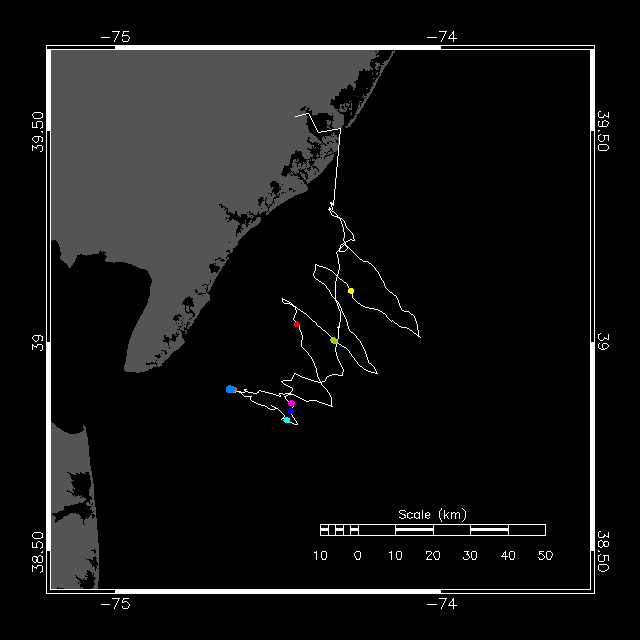Autonomous Real-time Marine Mammal Detections
Woods Hole Oceanographic Institution
Coastal New Jersey, Spring 2022
Study objectives
A Slocum G3 glider was deployed off the coast of Atlantic City, New Jersey to conduct surveys for tagged fish and baleen whales, including the seriously endangered North Atlantic right whale.
Principal Investigators: Josh Kohut (Rutgers University), Joe Brodie (Rutgers University) and Mark Baumgartner (WHOI)
Analyst: Julianne Wilder
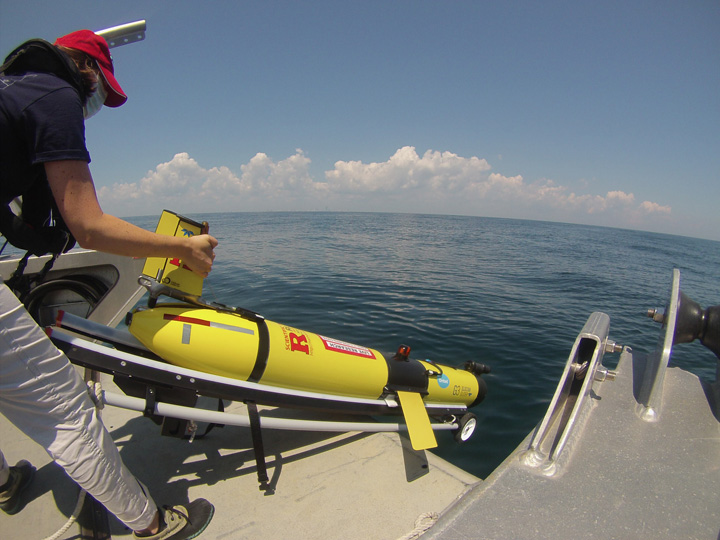
Platform location:
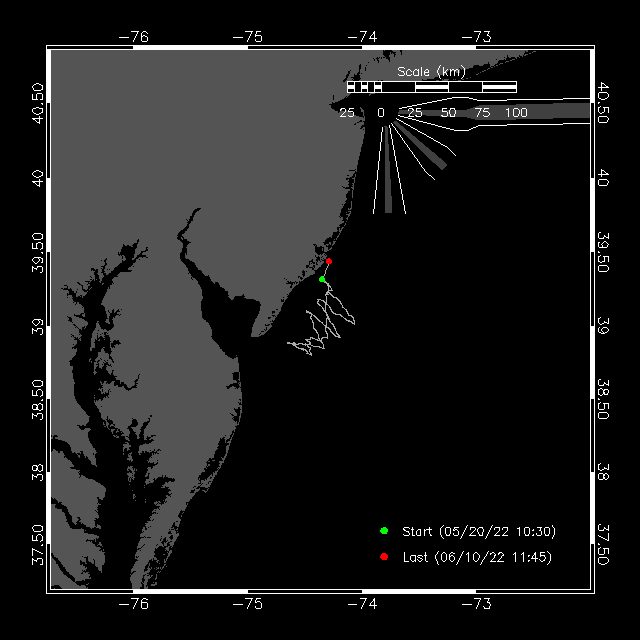
Analyst-reviewed species occurrence maps:

Daily analyst review:
| | Detected |
| Possibly detected |
| Not detected |
Time series:
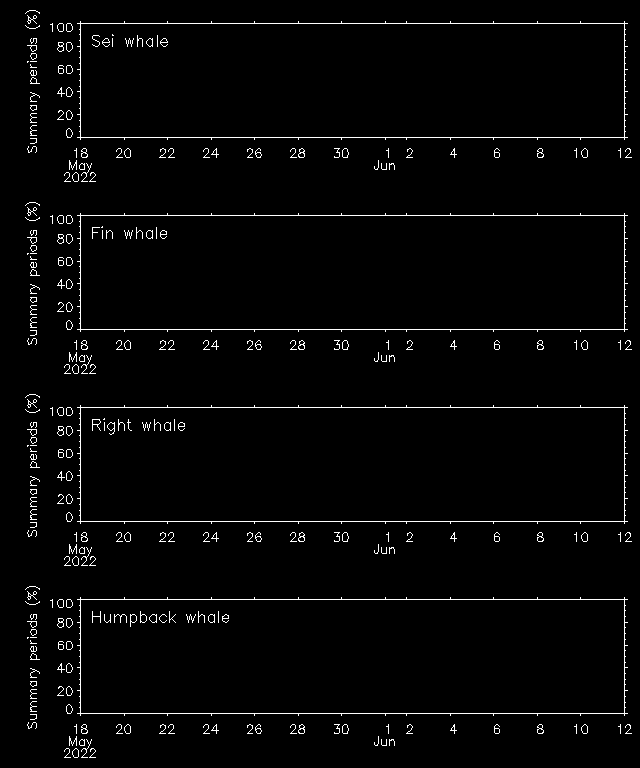
Diel plot:
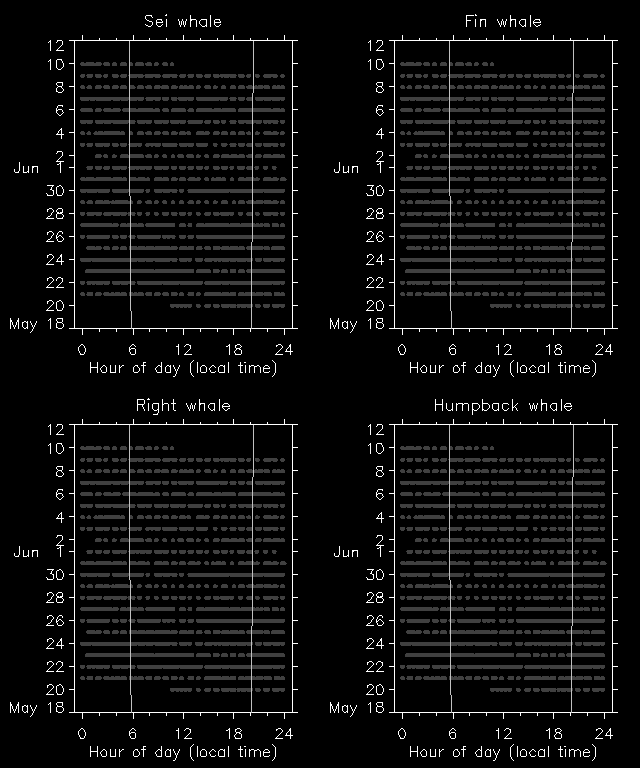
VEMCO tag detections:
Recent bacgkground noise:
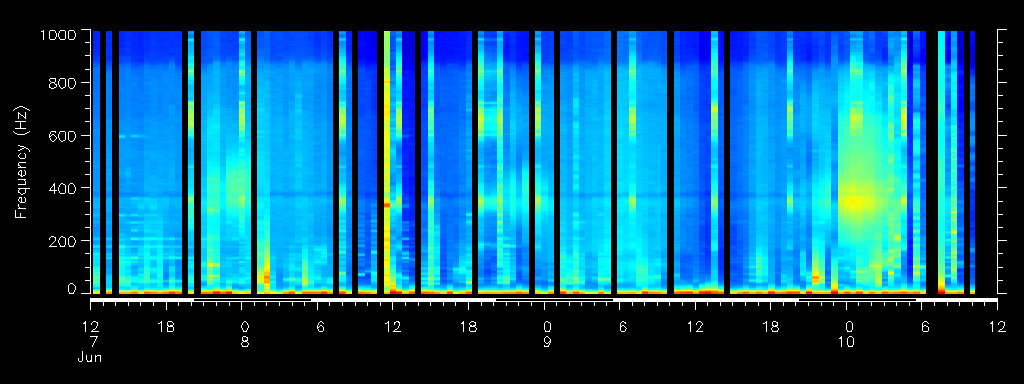
Oceanographic observations:
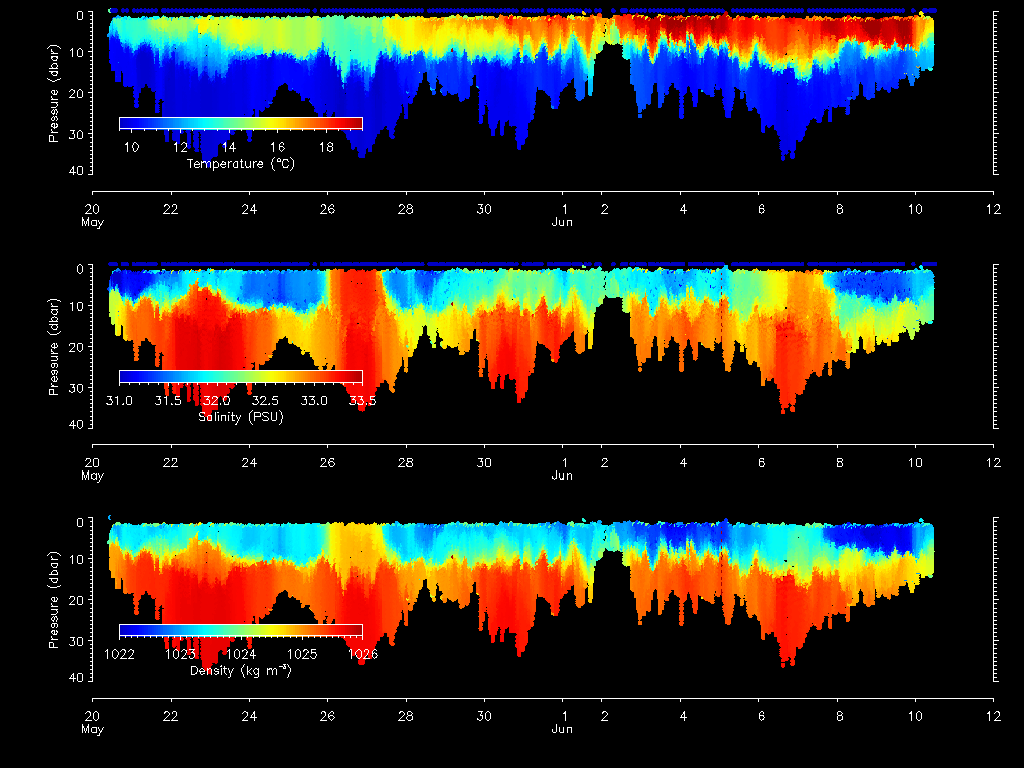
Links to detailed information:
Automated detection data
VEMCO tag detection data
DMON/LFDCS Diagnostics
Platform diagnostics
Sounds
What types of sounds are we monitoring? Find examples of the sounds right, fin, sei and humpback whales make here.
Questions
Please email Mark Baumgartner at mbaumgartner@whoi.edu. For a general desciption of the detection system and the autonomous platforms, visit dcs.whoi.edu.
Acknowledgements
The Slocum glider was prepared by David Aragon, Nicole Waite, Chip Haldeman and John Kerfoot (Rutgers University). Engineering support for the DMON2 instrument deployed on this glider was provided by Jim Partan, Dennis Giaya, Kayleah Griffen, Keenan Ball and Tom Hurst (WHOI). Support for the preparation, deployment and operation of the glider was provided by Orsted.
Home
